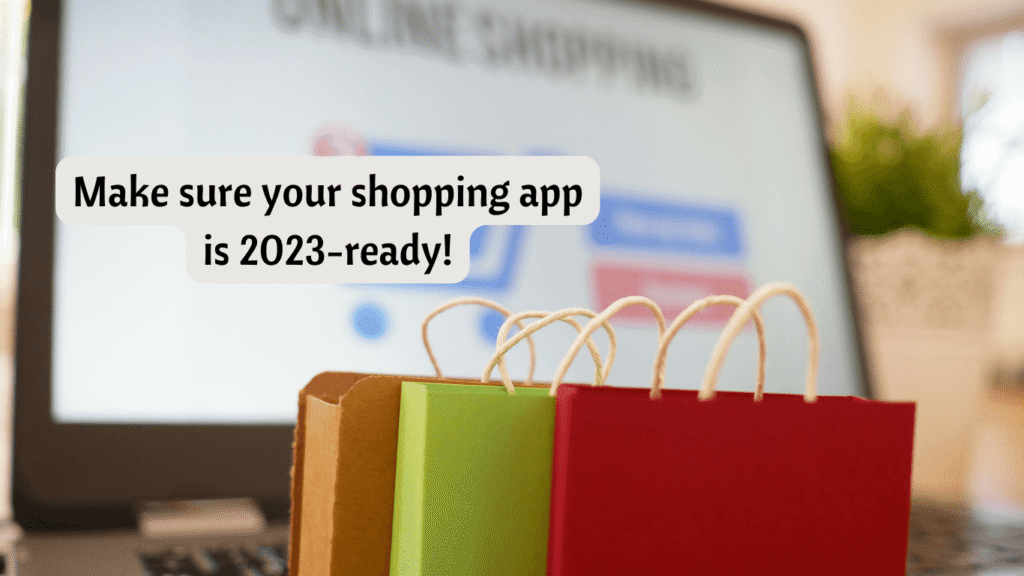Be Prepared!
Retail is typically one of the first industries to feel the effects of bumps in the road in the economy, and this is likely to be the case in a large portion of the world’s economy over the coming year. With inflation on the rise, the cost of living increases for everyone, from groceries and clothing to the high-end goods sold by multinational corporations. In addition, it pressures online stores to keep up with the times to keep attracting customers and earning a share of their customers’ reduced spending power. In the meantime, problems with the supply chain are making it hard to do business. This has led to stockouts and caused some stores to raise prices.
So how could retail marketers strive for their business against these hurdles?
To compete in today’s market, big and small stores increasingly rely on cutting-edge technological advances. The only solution is to take advantage of all that modern technology offers by giving customers better tools for shopping, saving money, and having fun.
Do you know?
Forrester thinks that by 2027, digitally influenced retail sales in the United States will have grown from $2.7 trillion in 2022 to $3.8 trillion. These numbers reached a CAGR of 7.2% over five years.
Since technology is our only hope, let’s review the retail industry’s most pressing technological needs to address for 2023.
Startling New Developments in Retail Technology for 2023
The year 2022 is drawing close, and it’s natural to consider what the following year may bring. Technological advancements will undoubtedly have a lasting impact on our daily lives, and as digital citizens, we recognize this. As a retailer, you should keep up with the latest technological developments to satisfy your customers and stay competitive.
The article here will give you a quick rundown of the top five retail technologies predicted to make waves in 2023, so you can get a head start on the coming year.
Hybrid Shopping
Hybrid shopping combines the advantages of online and offline shopping experiences to provide customers with optimal shopping trips. A well-realized hybrid customer experience will appeal to a wide variety of customers by allowing them to book in-store pick-ups or individualized experiences, receive product launches and VIP events both online and in-person and receive digital assistance and support. The primary focus is on ensuring the maximum level of customer satisfaction and open lines of communication at all times.
For online retailers, this means finding ways to mimic an enjoyable, tactile experience while shopping in physical stores. One option is to use cutting-edge technologies that allow for customization, such as VR/AR applications.
Offline stores (like Amazon’s Style stores) can learn from the logistics and stock management advancements made by e-commerce companies to implement customer-friendly features like multiple payments, delivery options, and reward programs. Similarly, traditional stores have much to teach their virtual counterparts about customer service and creating a memorable in-store atmosphere.
Adopting this hybrid mindset in 2023 will be a crucial strategy for retailers who want to continue building brand awareness and customer loyalty.

Conscious Consumerism
Two years ago, 58% of all consumers were willing to pay more for sustainable options. A recent survey found that nearly 90% of Gen X consumers would be willing to pay an extra 10% or more for sustainable products, up from just over 34% two years ago.
About two-thirds of us identify as “belief-driven buyers,” meaning that we care greatly about supporting businesses that adhere to sound environmental, social, and governance (ESG) principles when purchasing goods and services. Organizations that can successfully adapt to this trend will find that they can quickly build stronger bonds of trust and loyalty with their consumers while often making their operations and processes more efficient. Instead of being an obstacle or a hindrance to industry, organizations that can successfully adapt to this trend will see the following benefits: This objective can be accomplished by lowering overall energy consumption and cutting down on the waste caused by excessive packaging. Many companies have already adopted this strategy of cutting down on the packaging of shipments, which has led to increased brand loyalty and lower logistical costs.
Technology that helps businesses find innovative solutions to environmental and planetary threats and do so in a transparent and accountable manner will be a significant retail trend in 2023 as consumers become increasingly aware of the gravity of these threats.
Personalized Shopping Experiences
The development of data analytics has made it possible for stores to provide customers with highly customized shopping experiences. Stitch Fix is a clothing company based in California that employs a combination of online surveys and algorithms to select items of clothing that will, in theory, perfectly suit each customer’s style and size requirements. And the world’s largest athletic footwear maker, Nike, has introduced a new service called Nike By You, where customers can design their sneakers from scratch. These companies are lifestyle brands that have recognized a growing need in the market for individualized, one-of-a-kind items that speak to the consumer’s unique character and taste.
This development is not limited to apparel and footwear. Email and e-commerce portals will serve up personalized recommendations, and this trend will continue throughout the sales and marketing process, as well as upselling and after-sale support, where consumers have shown to respond positively to personalization. By 2023, companies that successfully adapt to this trend will have figured out how to use the plethora of available data to give customers the impression that their purchases are truly unique and personalized. As a result, customers will feel like the brand’s offerings are tailored to them as individuals rather than generic groups. The key to assembling most of this trend is to use technology to enable “personalization at scale.”

Metaverse, AR and VR
New studies show that providing a positive customer experience is what modern consumers value most. This means providing excellent service in a way that is effortless, effective, consistent, and leaves a lasting impression on the customer. So much is the concept of the “metaverse,” a persistent platform where users can work, play, and even shop, that has become a hot topic of discussion. Even though the future of the metaverse is uncertain, businesses have enthusiastically embraced it as a new and exciting way to communicate with and transact with their customers. Adidas, Nike, Tommy Hilfiger, Samsung, and Burberry are some well-known brands that have already debuted or announced their intention to enter the market.
Do you know
Nearly two-thirds, that is, 61% of American adults polled in one study, said that augmented reality had influenced their shopping habits
Virtual reality (VR) features prominently in the metaverse because it is the most immersive way for consumers to connect with these worlds. Shoppers can virtually trail on clothes, see how furniture looks in their homes, and feel products with VR headsets. VR is also convenient because it eliminates the need to visit a store, saving time and money.

AR is used in the retail sector of the fashion industry; smart mirrors will usher in a level of interactivity never seen before. With virtual changing rooms, customers won’t even have to undress to try a new wardrobe; they can superimpose items and outfits and get feedback from friends via social media. Companies like Ikea and Home Depot have been using augmented reality for some time now to show customers how the furniture they sell will look in their homes.
In 2023, we anticipate increasing businesses using such technologies and continuing their innovative spirit in response to consumers’ demand for more interactive and entertaining retail experiences.
Cashless and Contactless Shopping
Artificial intelligence inevitably comes up when discussing the latest innovations in retail technology, as it should be. Much of the transformation in the retail industry is driven by AI. Artificial intelligence underpins many modern conveniences, such as “scan and goes” checkout and facial recognition systems.
Do you know
According to Graphical Research, North American Artificial Intelligence (AI) in the retail market is expected to reach US$ 10 billion by 2027.

In today’s market, customers expect a more streamlined and efficient process from when they place an order until they receive the product in their hands. Buy online, pick up in-store (BOPIS), buy online, return to the store (BORIS), and buy online, pick up at curbside (BOPAC) are examples of convenience trends that are rapidly becoming the norm and expected. These are now possible thanks to AI and advanced analytics, which have enabled the automation of previously labor-intensive processes involved in managing stocks. It’s also crucial for the autonomous delivery methods that stores are testing out and eventually implementing.
For example, Starship’s delivery robots have seen a surge in demand since the pandemic and have already made over 100,000 deliveries without human intervention in the United Kingdom, the United States, and Europe. Amazon’s Scout delivery robots can now be seen in many US cities like Irvine, California, Atlanta, Georgia, and Franklin, Tennessee, while the Chinese retailer JD.com operates fleets of autonomous delivery vehicles. Companies can save money by eliminating the need for manual courier delivery for last-mile fulfillment, and they can lessen their environmental impact by switching to electric cars that renewable energy sources like solar can power. The real challenge for retailers in the coming year will be how to handle this transition ethically, given the impact it will have on the lives of thousands of human delivery drivers.
Now that we’ve covered the prerequisite tools, let’s look at the features your shopping app needs in its mobile iteration.
Must-Have Retail App Features
1. Friendly UI
Simple, easy-to-use mobile commerce apps are usually well-known. Easy registration boosts conversion rates and purchases. Engaging customer service messaging with a human or chatbot is an expected choice now. The app should provide a detailed product description to reduce impulse purchases, customer dissatisfaction, and product returns. Customers should read or leave product reviews to build trust and loyalty.

2. Payment alternatives
You’ll need to provide a flexible payment system for users to complete purchases via your app. If you want users to have a pleasant and stress-free experience making purchases in your app, you should incorporate multiple payment options. The likelihood of refunds or order errors, which can negatively affect the user experience, can be mitigated by providing a summary of the customer’s purchase and payment details before they proceed to the payment screen.
3. Shipment tracking
An overwhelming majority of consumers (almost 86%) believe that knowing when they can expect to receive their order is important when shopping online. Another important feature for e-commerce sites to include in their app is the ability to track the progress of a customer’s shipment from the time it was placed until it was delivered.
4. Rewards programs
Using a mobile commerce app to increase customer loyalty is a smart move. You can incentivize repeat business and word-of-mouth advertising by offering promo codes and recommending your app to customers.
5. Push alert
Users can be alerted to new product releases, the availability of previously saved items, limited-time discounts, and other individualized marketing initiatives via push notifications. These subtle but effective prods are the key to getting your brand’s message across to consumers.
6. Buy now, Pay Later (BNPL)
The pandemic has highly impacted consumer buying patterns and has boosted BNPL allowing customers to buy now and pay later, usually in interest-free instalments. This eCommerce trend will grow, especially among youth.
7. Artificial intelligence chatbots
Chatbots are becoming increasingly popular in the retail sector. Chatbots are common, but they haven’t thoroughly permeated mobile. Most apps don’t use chatbots. Since chatbots are powered by more personalized assistance, they are rapidly rising in importance as a marketing tool to address customers’ concerns and encourage a positive shopping experience.
8. Voice Commerce
Many business owners fail to recognize the potential of the relatively new technologies of voice and augmented reality shopping in mobile commerce. Voice shopping is expected to reach $45 billion by the end of 2022, thanks to the success of voice assistants like Siri and Alexa. With the introduction of the voice assistant, customers can now browse for products and finalize their purchases entirely through only their voices, revolutionizing the online shopping experience. In addition, augmented reality (AR) is the most cutting-edge technology for providing virtual shoppers with a tangible experience of the products they’re considering purchasing. AR and voice shopping are advantageous to your online presence in the current online battle.
Hopefully, the concepts discussed in this in-depth article about retail and e-commerce platform trends and tools will have taken root in your mind. Apps designed specifically for use in retail establishments originate from technological advancements in the past few years. These apps aim to improve customers’ shopping experiences by making shopping more enjoyable. But if you want your app to be successful in the long run, you’ll need to meet the needs of your users in a meaningful way through regular updates and strong user engagement and retention.






